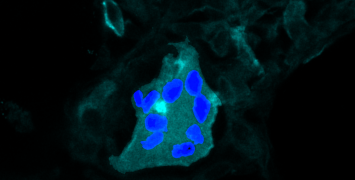Ageing healthily: European scientists unlock the molecular secret behind bat longevity
Scientists led by ERC grantee Emma Teeling have identified part of the molecular mechanism that gives bat species Myotis their extraordinary long and healthy lifespans. The longest-lived bats can live over 41 years of age while weighing only 7g, which is the human equivalent of some 234 years. They also maintain good health longer than many other mammals. The findings, published in the journal Science Advances, focus on the protective structures at the end of chromosomes, called telomeres. Bats may have evolved unique telomere maintenance mechanisms which allow them to repair age-related cell damage.
In collaboration with University College Dublin.
According to the scientists, in the longest-lived species of bats (Myotis) telomeres don’t shorten with age. In other bat species, humans and other animals they do, causing the age-related breakdown of cells that over the course of a lifetime can drive tissue deterioration and ultimately death.
The study, funded by the European Research Council (ERC), involved 10 different research and conservation institutes and bat biologists: from Ireland, France, Portugal, Germany, and the United Kingdom. Proportionally to their size, these animals are some of the few mammals that live longer than humans and they are an interesting exception to the ageing rule.
Watching this video you are accepting Youtube cookies policy
The researchers took 3-mm wing biopsies from some 500 wild bats from across four species that they captured, marked and released. The samples were flash frozen in liquid nitrogen or desiccated using silica beads, then high-molecular weight DNA was extracted, and change in telomere length was assessed.
“Our results show that telomeres shorten with age in two of the bat species (Rhinolophus ferrumequinum and Miniopterus schreibersii), typical of most mammals,” says Dr. Nicole Foley a team member of Professor Teeling's lab at University College Dublin, Ireland, and the lead author of the study. “But in the longest-lived species of bats (Myotis), we did not detect any evidence that their telomeres shorten with age, contrary to all expectations.”
A unique process to lengthen chromosomes without inducing cancer
To uncover how the long-lived species of bats can maintain their telomeres over time, they compared their genomes with those of 52 other mammals, focusing on 225 genes associated with the maintenance of telomeres.
“Our results suggest that long-lived bats have evolved better mechanisms to prevent and repair age induced cellular damage. In particular two genes ATM, SETX may drive this,” says Professor Teeling, senior author of the scientific paper.
“Bats showed no expression of telomerase but rather, may have evolved a unique process to lengthen their chromosomes without inducing cancer. These are exciting new results that we need to further explore to uncover how bats can remain healthy as time passes.”
"This study was really high-risk as the molecular changes that occurred in bats as they aged was completely unknown. We had to develop new molecular techniques and tools to make it possible, and forge novel collaborations across Europe with both academic and conservation organisations." says Prof. Teeling. "The ERC and funding panels believed in the future possibilities of this fundamental project and this enabled us to achieve the impossible!"
The results of the study are a first step in helping us to understand the molecular mechanisms bats have evolved that underlie their long and unusually healthy life-spans. Studying wild bats in an ageing context may provide new solutions to slow down the ageing process, fight cancer and Alzheimer's disease and ultimately extend human health-spans.






